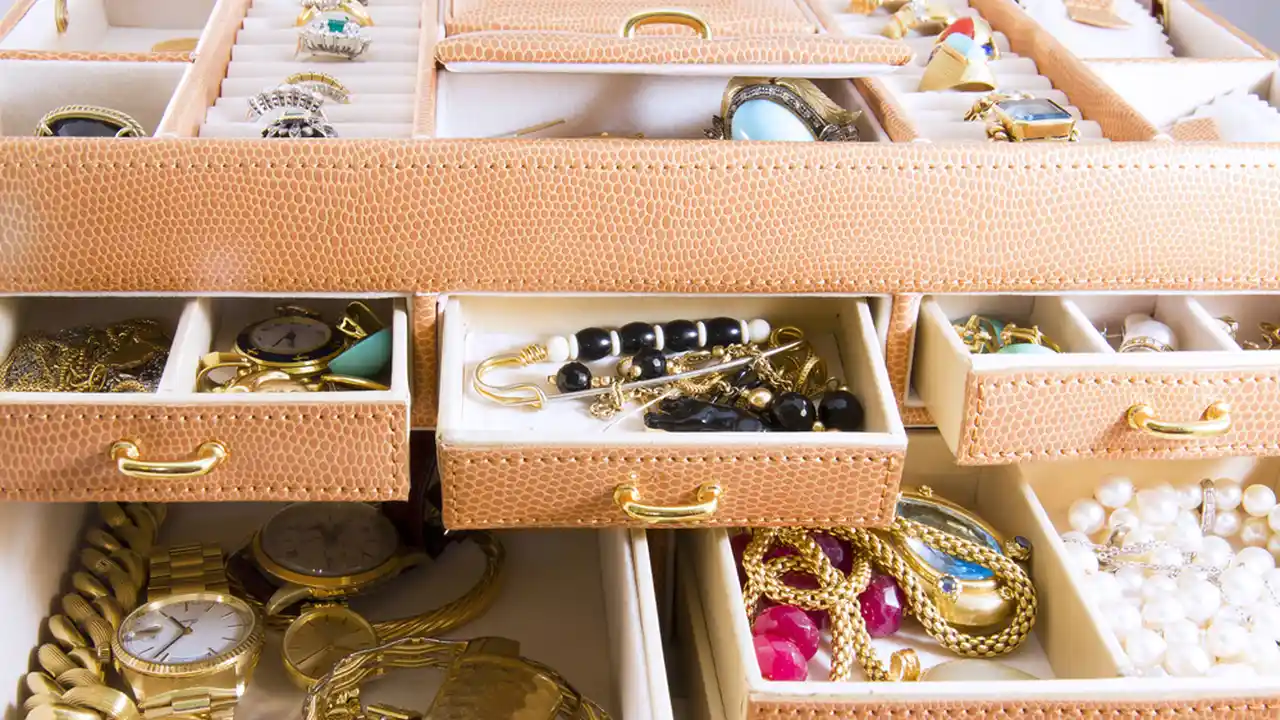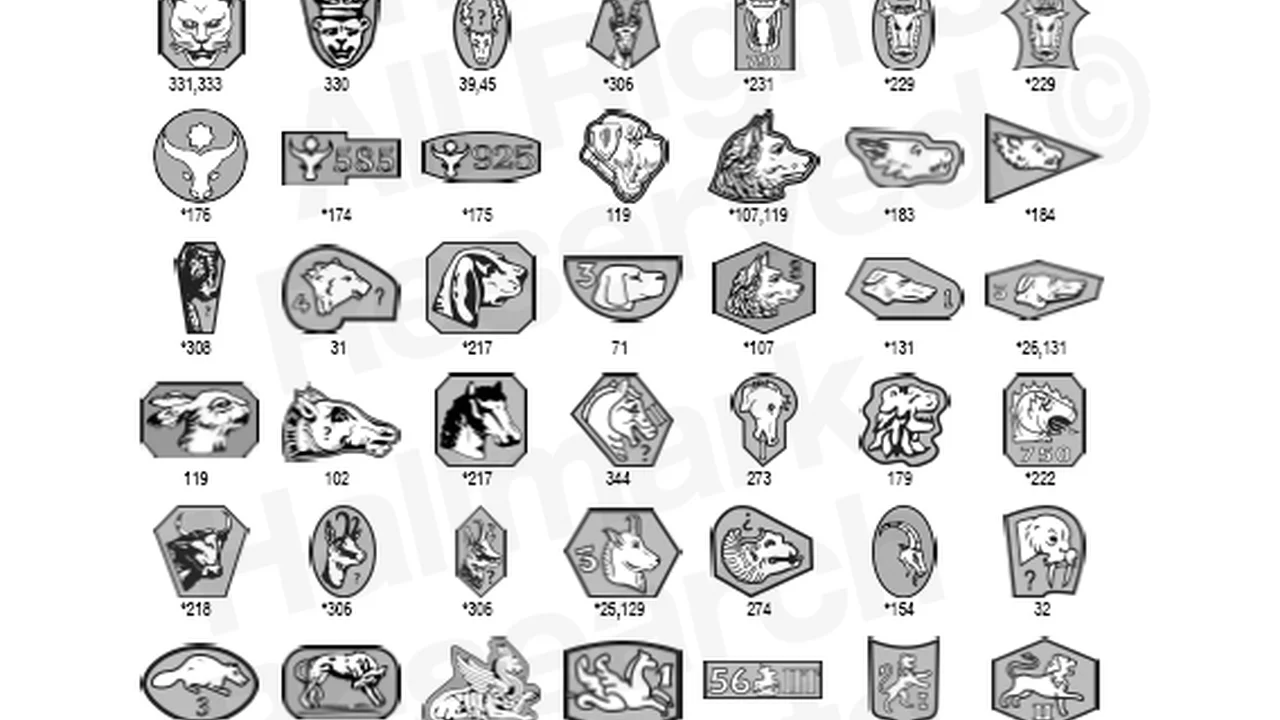Victorian vs Edwardian Jewelry 7 Key Differences
Explore the distinct characteristics of Victorian and Edwardian jewelry Learn about materials, designs, and hallmarks of these iconic eras.

Hey jewelry lovers! Ever get Victorian and Edwardian jewelry mixed up? Don't worry, you're not alone! These two eras, though close in time, have totally different vibes. Let's dive into the key differences so you can spot them like a pro!
Victorian Jewelry: A World of Romance and Mourning
The Victorian era (1837-1901), named after Queen Victoria, was a time of great change and innovation. Jewelry reflected this, evolving through distinct periods: the Romantic period, the Grand period, and the Aesthetic period. Each sub-era brought its own style to the forefront.
Victorian Jewelry Materials and Motifs
Victorian jewelry is known for its sentimental motifs. Think hearts, flowers, birds, and snakes (yes, snakes!). Materials included gold, silver, jet (for mourning jewelry), and a variety of gemstones. Popular gemstones were diamonds, pearls, garnets, amethysts, and coral.
Victorian Jewelry: Romantic Period (1837-1860)
This early Victorian period was all about romance! Jewelry often featured delicate designs, floral motifs, and sentimental inscriptions. Lockett necklaces and brooches were super popular, often containing a lock of hair or a miniature portrait.
Victorian Jewelry: Grand Period (1860-1880)
After Prince Albert's death, Queen Victoria went into mourning, which heavily influenced jewelry trends. Jet, a black organic gemstone, became incredibly popular. Jewelry became more somber, often featuring darker gemstones and heavier designs.
Victorian Jewelry: Aesthetic Period (1880-1901)
As the Victorian era neared its end, jewelry became lighter and more artistic. Japanese and Egyptian influences became prominent. Motifs included dragonflies, butterflies, and other natural elements. There was a return to brighter gemstones and more delicate designs.
Edwardian Jewelry: Light, Airy, and Elegant
The Edwardian era (1901-1910), named after King Edward VII, was a short but influential period in jewelry history. Think elegance, lightness, and a touch of extravagance. This era is often referred to as the 'Belle Époque' (Beautiful Era).
Edwardian Jewelry Materials and Motifs
Edwardian jewelry is characterized by its delicate designs and use of platinum. Platinum allowed jewelers to create intricate, lacy designs that were impossible with other metals. Diamonds, pearls, and light-colored gemstones like aquamarine and peridot were popular. Motifs included bows, garlands, and geometric patterns.
Edwardian Jewelry: The White-on-White Look
A hallmark of Edwardian jewelry is the 'white-on-white' look. This involved combining platinum with diamonds and pearls to create a shimmering, ethereal effect. This style exuded sophistication and luxury.
Edwardian Jewelry: The Use of Milgrain
Milgrain, a delicate beaded edging, was a common feature in Edwardian jewelry. This added a subtle texture and sparkle to the designs, enhancing their overall elegance.
7 Key Differences Between Victorian and Edwardian Jewelry
- Metal: Victorian jewelry often used gold, silver, and jet. Edwardian jewelry heavily favored platinum for its strength and ability to showcase diamonds.
- Design: Victorian designs were often heavier and more ornate. Edwardian designs were lighter, more delicate, and often featured intricate openwork.
- Motifs: Victorian jewelry featured sentimental motifs like hearts and flowers. Edwardian jewelry favored bows, garlands, and geometric patterns.
- Gemstones: Victorian jewelry used a wide variety of gemstones, including darker stones like garnets and jet (especially during the Grand Period). Edwardian jewelry favored diamonds, pearls, and light-colored gemstones.
- Color Palette: Victorian jewelry had a richer, more varied color palette. Edwardian jewelry often featured a 'white-on-white' look.
- Overall Vibe: Victorian jewelry feels more romantic, sentimental, and sometimes somber. Edwardian jewelry feels more elegant, refined, and luxurious.
- Techniques: Edwardian jewelers heavily utilized techniques like milgrain and intricate piercing, which were less common in Victorian jewelry.
Victorian Jewelry Examples: Product Recommendations and Usage Scenarios
Victorian Mourning Brooch with Jet and Seed Pearls
Description: A classic Victorian mourning brooch featuring a carved jet center surrounded by seed pearls. Typically oval or rectangular in shape.
Usage Scenario: This brooch can be worn on a lapel, scarf, or dress. It's a statement piece that reflects the Victorian era's emphasis on remembrance.
Price Range: $200 - $800 (depending on size, condition, and craftsmanship).
Victorian Gold Locket Necklace with Hair Compartment
Description: A gold locket necklace with a compartment to hold a lock of hair or a small photograph. Often engraved with floral or sentimental designs.
Usage Scenario: A sentimental piece, perfect for everyday wear or special occasions. Can be paired with other vintage-inspired jewelry.
Price Range: $500 - $1500 (depending on gold content, gemstone embellishments, and condition).
Victorian Garnet Ring in Rose Gold
Description: A ring featuring a deep red garnet set in rose gold. Often with intricate detailing around the gemstone.
Usage Scenario: A bold and eye-catching ring that can be worn alone or stacked with other rings.
Price Range: $300 - $1000 (depending on garnet size and quality, and gold content).
Edwardian Jewelry Examples: Product Recommendations and Usage Scenarios
Edwardian Diamond and Platinum Pendant Necklace
Description: A delicate pendant necklace featuring diamonds set in platinum. Often with intricate openwork designs.
Usage Scenario: A timeless and elegant piece perfect for formal occasions or adding a touch of sparkle to everyday outfits.
Price Range: $1500 - $5000+ (depending on diamond size and quality, and platinum weight).
Edwardian Pearl and Platinum Brooch with Diamonds
Description: A brooch featuring pearls and diamonds set in platinum. Often with floral or geometric designs and milgrain detailing.
Usage Scenario: Can be worn on a lapel, scarf, or dress. Adds a touch of sophistication and vintage charm.
Price Range: $800 - $3000+ (depending on pearl size and quality, diamond carat weight, and platinum weight).
Edwardian Diamond and Platinum Ring with Milgrain
Description: A ring featuring diamonds set in platinum with delicate milgrain detailing. Often with intricate openwork designs.
Usage Scenario: A stunning engagement ring or a special occasion ring.
Price Range: $2000 - $10,000+ (depending on diamond size, cut, clarity, and platinum weight).
Victorian vs Edwardian: A Quick Comparison Table
| Feature | Victorian Jewelry | Edwardian Jewelry |
|---|---|---|
| Metal | Gold, Silver, Jet | Platinum |
| Design | Heavier, Ornate | Lighter, Delicate |
| Motifs | Hearts, Flowers, Snakes | Bows, Garlands, Geometric Patterns |
| Gemstones | Garnets, Amethysts, Jet, Pearls | Diamonds, Pearls, Aquamarine |
| Color Palette | Rich, Varied | 'White-on-White' |
So, there you have it! Now you can confidently tell the difference between Victorian and Edwardian jewelry. Happy collecting!
:max_bytes(150000):strip_icc()/277019-baked-pork-chops-with-cream-of-mushroom-soup-DDMFS-beauty-4x3-BG-7505-5762b731cf30447d9cbbbbbf387beafa.jpg)






